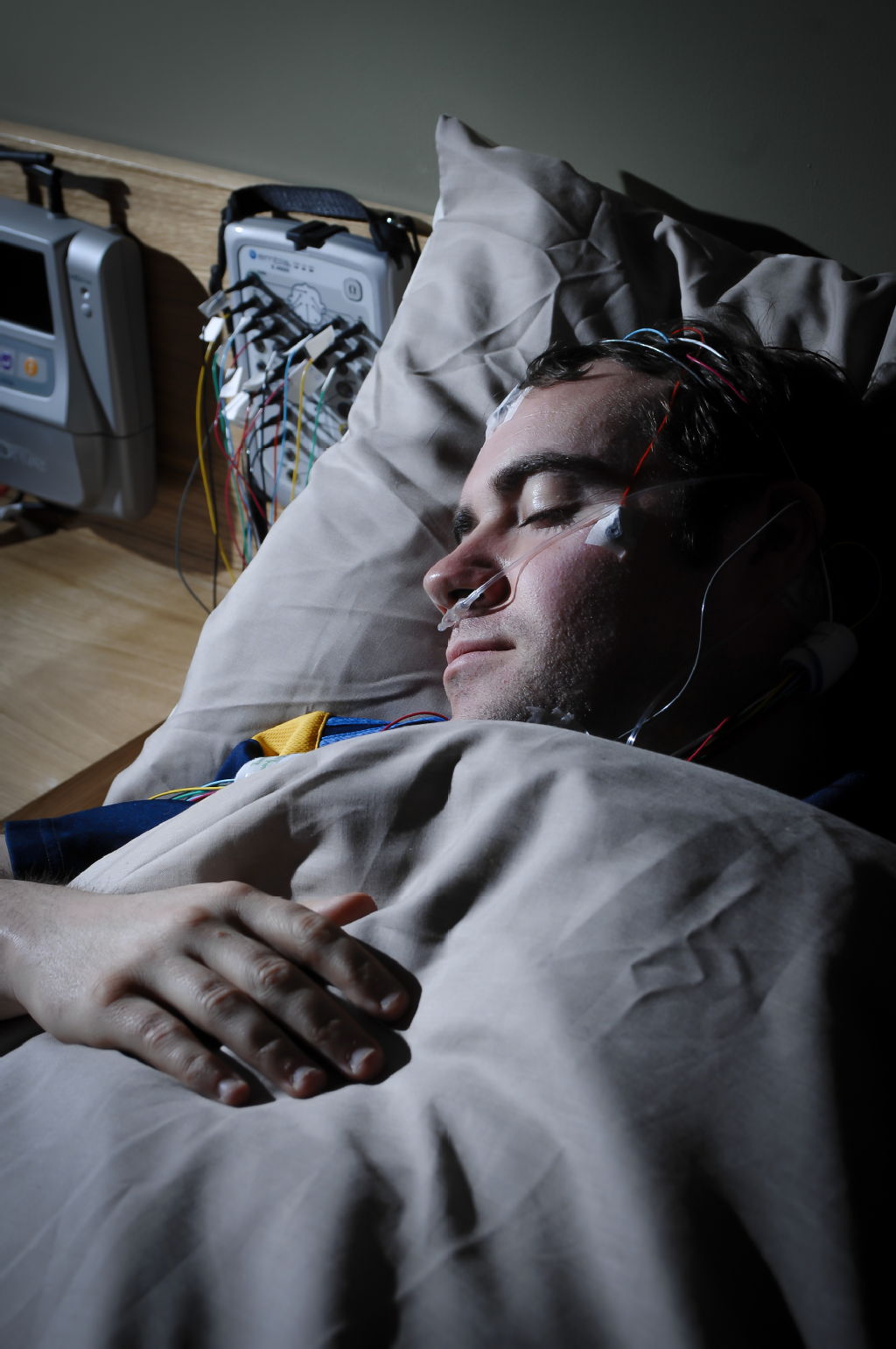Coming for a Sleep Study
What is a sleep study?
• An overnight sleep study involves applying polysomnography (PSG) to monitor a range of physiological functions during sleep, including brain activities, heart rate, breathing, eye movements and leg movements.
•PSG is the gold standard of sleep measurement. It can be applied to provide real-time information about what your brain and body are doing when you are sleeping, or an overview of your sleep pattern if conducted over several nights and repeatedly.
• For our research, we are interested in using PSG to obtain some information about the quality and architecture of your sleep. These may provide crucial information to help us understand the kind of sleep disturbance experienced by people with or without chronic pain.
What happens during the sleep study?
•If you agree to take part in a sleep study, you will be asked to arrive at the Sleep & Pain Laboratory usually between 7 pm and 9 pm in the evening. One of the researchers will greet you and lead you to the sleep study room and we will show you the equipment that will be used for the study. This will also be a time for you to ask any questions you may have about the study and the procedure. You will be given time to change into nightclothes and to make yourself at home in the bedroom.What happens during the sleep study?
• Next, the researcher will attach sensors to your scalp and body and this will take about an hour. The sensor sites will be treated with a mild abrasive cream on a cotton-bud and the sensors will be attached via a paste that is a glue-like conducive adhesive and/or medical tape. This is to make sure that we are getting good quality signals from the sensors during the recording.
• The bedroom is fitted with an infra-red video camera and the researcher will be able to monitor your sleep from the adjacent room. You will be able to communicate with the researcher in the control room through the intercom system, anytime and if you require any help or assistance.
• Once everything is ready for the recording, the lights will be turned out when it is time for you to go to sleep. When you wake up in the morning, all sensors will be removed and there is a shower available to wash up after all the sensors have been removed.
Will the recording disturb my sleep?
• None of these monitoring devices is painful. They are all designed to be as comfortable as possible. The sensors may feel strange on your skin at first. However, most people get used to them very quickly.
• Sometimes, in preparing the sites for sensor application, some people experience mild skin irritation; please inform us if you have any known sensitivity to particular tapes or if you have a latex allergy. We can adjust the procedure accordingly to make the sleep study as comfortable as possible, within the constraints of a monitored setting.
What to prepare and bring for a sleep study?
• Be sure to eat dinner before you arrive as most restaurants on the campus are closed by the time you arrive.
• Try not to take any naps on the day of the study as this may affect your sleep overnight.
• Use of caffeine, nicotine and certain medications before and during an overnight study may be restricted prior to some studies; you will be informed of this when you sign up for specific studies.
• Before coming to the lab, wash your hair thoroughly, dry your hair and do not apply any hair sprays, oils or gels. If used, they could interfere the functioning of the sensors during the study.
• Pack an overnight bag to bring with you to the lab - bring comfortable loose fitting (preferably two-piece) pyjamas and a change of clothes for the morning.
• Bring your personal toiletries (toothbrush, toothpaste, shower gel, shampoo, moisturisers, comb/hairbrush, makeup remover, slippers etc.)
• The lab provides towels and bedding and there is an en-suite bathroom and shower in the room. You may also want to bring your own pillow, if that helps you sleep in an unfamiliar environment.
• You may also bring reading materials, tablets or a laptop but you will not be able to use these overnight as they will interfere with your sleep.

